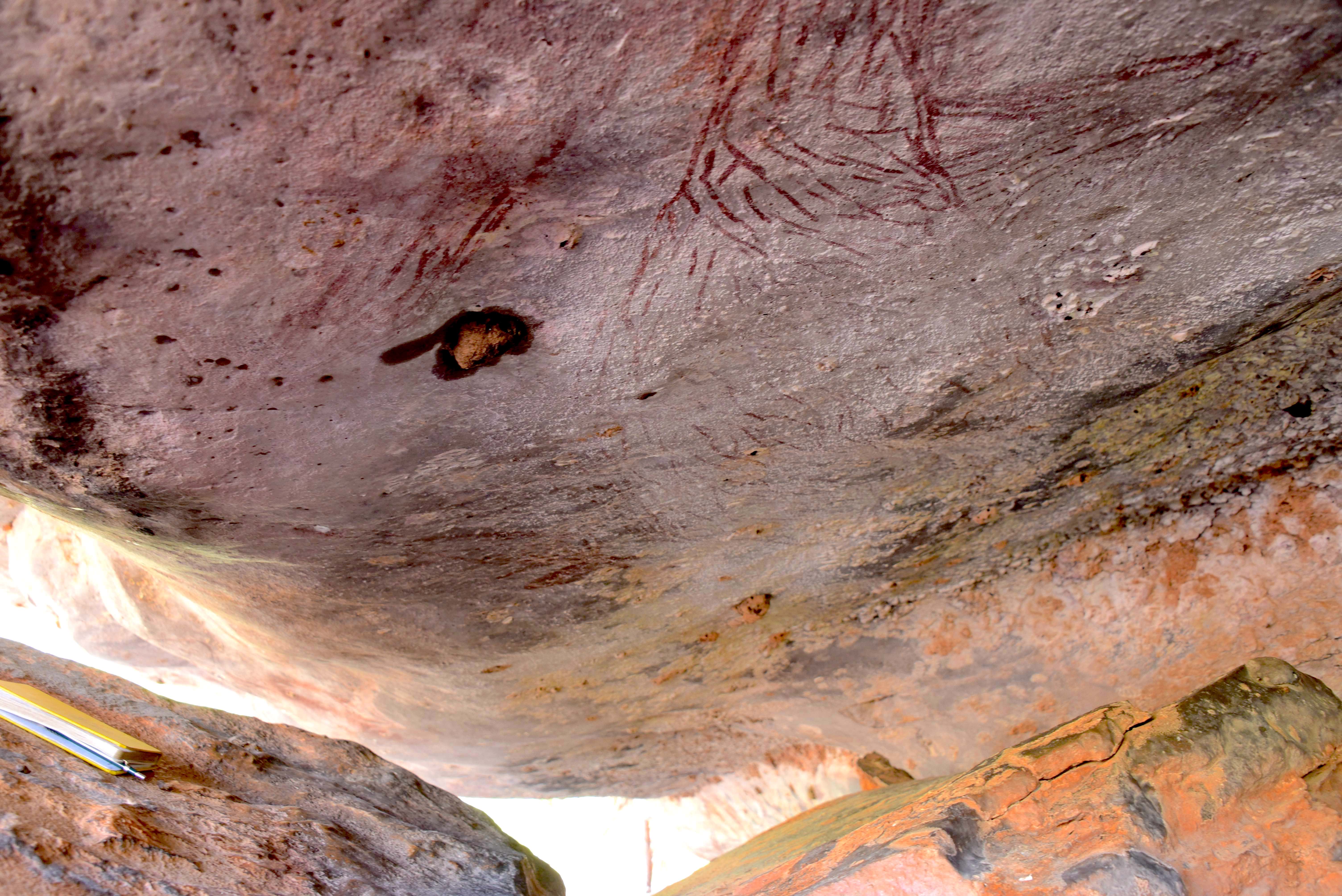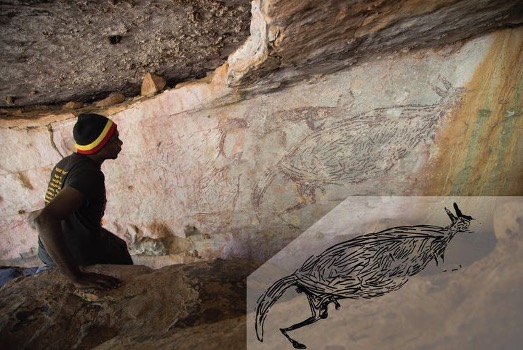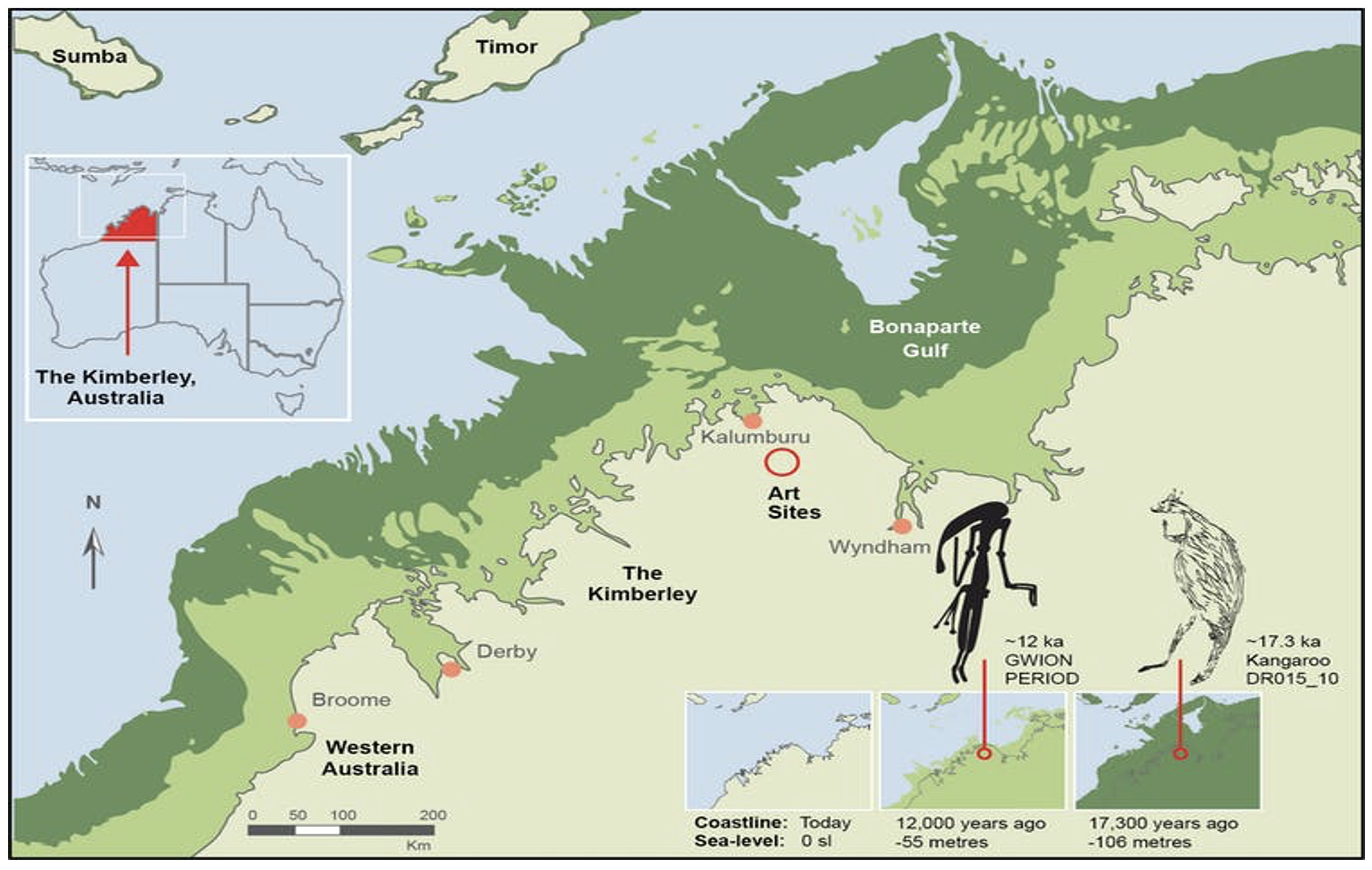
Politics & Society
Safeguarding our shared cultural heritage

New dating techniques reveal Australia’s oldest known, intact, Aboriginal rock paintings – dating back 600 generations
Published 23 February 2021
Deep in a northeast Kimberley rock shelter on Balanggarra Country is a two metre-long rock painting of a kangaroo. This kangaroo is now Australia’s oldest known, intact Aboriginal rock painting.
The painting itself we have now dated to between 17,500 and 17,100 years old.

Using a pioneering technique of radiocarbon dating on 27 mud wasp nests that sat under and over 16 of these paintings, we show they were produced between 17,000 and 13,000 years ago.
The Kimberley is one of the world’s premier rock art regions in which rock shelters preserve galleries of paintings with generations of younger artwork often applied on top of older paintings.

Politics & Society
Safeguarding our shared cultural heritage
Our work in dating it is part of Australia’s largest rock art dating project, with members that include the Balanggarra Aboriginal Corporation, the universities of Melbourne and Western Australia, the Australian National Science and Technology Organisation, with funding support from Rock Art Australia and the Australian Research Council.
Earlier researchers studied the style of thousands of these paintings and the order in which they were painted when they overlap, to develop a stylistic sequence. In this sequence, the oldest style often features life-size animals in outline form, infilled with irregular dashes – called the ‘Irregular Infill Animal’ or ‘Naturalistic’ period.
The ochre used is an iron oxide in a red to mulberry colour.

Unfortunately, no current scientific dating methods can determine the time when this paint was applied to the rock surface.
A different approach is to date fossilised insect nests or mineral accretions on the rock surfaces, that happen to be overlying or underlying rock art pigment. These dates provide a maximum (underlying) or minimum (overlying) age constraint for the painting, narrowing down the period of time when paintings in this style were commonly produced.
For the Kimberley Naturalistic paintings, our initial results suggest this period spanned from at least 17,000 to 13,000 years ago.

Arts & Culture
50 words in Australian Indigenous languages
In northern Australia, mud wasps are inclined to build their nests in rock shelters, often at places with rock art. Some sites were used by wasps for tens of thousands of years and can have layers of superimposed nests.
Sadly, some of these nests can damage rock art and can totally cover the images. But they also provide an opportunity – this is because mud wasp nests contain organic matter suitable for radiocarbon dating.
Very rarely, we find mud wasp nests both overlying and underlying a single painting. This means if nests under paintings or stencils are sampled, they can provide maximum ages for overlying artwork, while nests on top of rock art can give minimum ages.

We found one such painting of a kangaroo on the ceiling of a low, well-protected, rock shelter and were able to date three wasp nests underlying the painting, and three nests built over it. These ages allowed us to determine confidently that the painting is between 17,500 and 17,100 years old; most likely 17,300 years old.
These chronometric ages support the relative dating inherent in the Kimberley stylistic sequence by suggesting that the oldest, Naturalistic style was followed by the Gwion style featuring paintings of decorated human figures, often with headdresses and holding boomerangs.
Our work, published last year shows Gwion paintings flourished around 12,000 years ago, some 1,000 to 5,000 years after the Naturalistic period.

Arts & Culture
The many voices of the North
These dates allow us partially to reconstruct the environment in which these artists lived some 600 generations ago.
This rock art gives us unique windows into the past with the imagery, presumably, reflective of what was important to the artist in particular places in varying periods of time.
For example, we now know that the Naturalistic period coincided with the Last Ice Age, so the environment was cooler and drier than today. Some 17,000 years ago, sea levels were a staggering 106 metres below today’s and the Kimberley coastline was about 300 kilometres further away, more than half the distance to Timor. Aboriginal artists often chose to depict kangaroos, fish, birds, echidna, and plants, particularly yams.
As the climate warmed, ice caps melted, the monsoon re-established, rainfall increased and sea levels rose — sometimes rapidly.

By the Gwion period, sea levels had risen to 55 metres below those of today, no doubt causing long-term adjustment to territories and social relations.
Indeed, the rock art of Aboriginal painters shifts away from images of large animals and few humans, replaced by highly decorated human figures that bear a striking resemblance to early 20th century photographs of Aboriginal ceremonial dress.

Arts & Culture
Feather-flowers and photographs
Although the number of paintings for which we have old age constraints far exceeds anything available previously, many more dates are required to determine the full age span of the various art periods. One minimum age on a Gwion painting suggests it may be more than 16,000 years old, so some Gwion art may overlap the earlier Naturalistic phase.
It is also extremely unlikely that we were lucky enough to date the oldest surviving Naturalistic painting. Future research will undoubtedly locate older paintings.
But for now, a 17,300-year-old painting of a kangaroo in the Kimberley is the oldest known intact painting in Australia.
The project also collaborates closely with Traditional Owners from remote communities at Kalumburu and Wyndham including; Ian Waina, Uriah Waina, Lucas Karadada, Ethan Karadada, Augie Unghango, Scottie Unghango, Trinity Unghango, Gareth Unghango, Jeremy Unghango, Patrick Tataya, Rowan Waina, Mark Unghango, Adrian French, Ambrose Chalarimeri and Balanggarra Rangers: James ‘Birdy’ Gallagher and Wes Alberts.
Banner: Damien Finch /Balanggarra Aboriginal Corporation